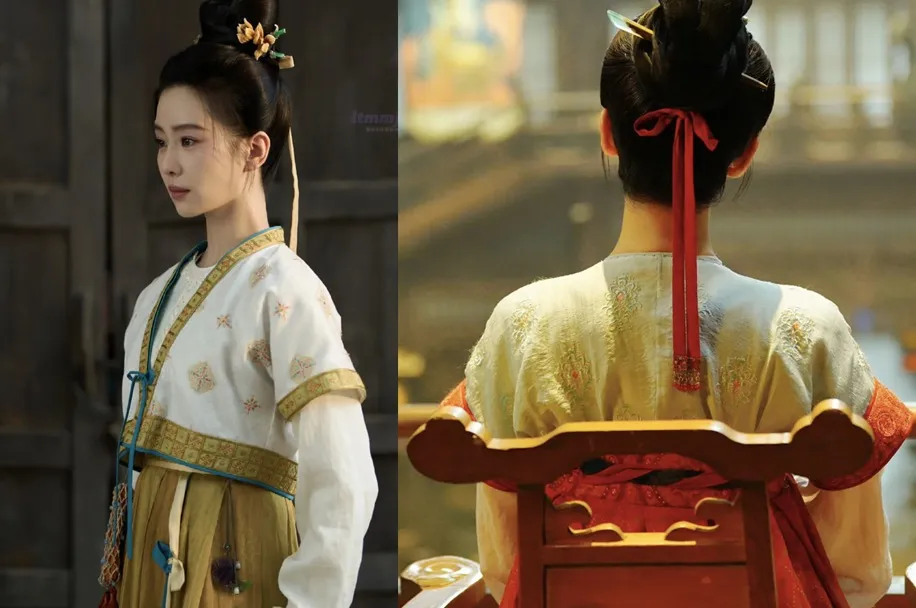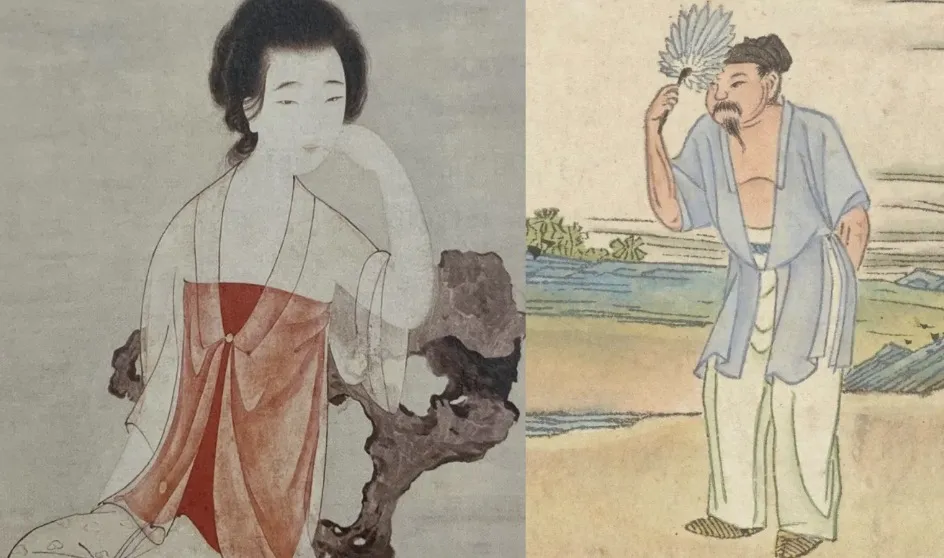It's rare to see short sleeves in ancient costume dramas. Why is that? Did ancient people not have summer Hanfu? Wearing multiple layers must have been unbearably hot, right? Let's get straight to the point. How did ancient people stay cool and stylish? They weren't foolish enough to suffocate themselves in long - sleeved layers.
Ancient vests came in short - sleeved, sleeveless, and even strappy designs. If you rummage through an ancient wardrobe, you’d find inspiration that defies our conservative stereotypes. For example, the 'vest' or 'Bijia' was a sleeveless, front - opening garment with slits reaching below the knees. Inherited from the Song Dynasty and popular during the Yuan and Ming dynasties, it usually reached the hips or knees, and some were even longer, less than a foot from the ground. It was often worn over other clothes, and could be worn alone at home when relaxing and enjoying the cool. In the Ming dynasty, such vests were also called 'Gua' or 'Bijia', referring to sleeveless tops of various collar styles. At home, without an undergarment and with lightweight fabric, 'wardrobe malfunctions' were common. No wonder outsiders were barred from the inner quarters!
Short sleeves, known as 'Banxiu' or 'Banbi', evolved from short jackets and typically reached the waist with elbow - length or shorter sleeves. They were usually layered over long sleeves but could be worn alone by women at home or by men during farming or labor—perfect for summer.
Even underwear wasn’t fully wrapped; some had open backs. Take the inner garment from the Southern Song Huang Sheng tomb as an example. It had a back - tied design with 'cat - ear' details in the front. The straps along the 'cat ears' were加固 to prevent shifting and could cover up extra flesh. It was stylish, practical, and subtly sexy.
Even in public, lightweight fabrics like sheer gauze were layered for comfort. For instance, in the past, women might wear a semi - transparent front - opening gauze over an inner garment, and the inner layer was faintly visible. It shows that ancient fashion wasn’t as stifling as modern dramas portray. In the Ming era, innovations like the 'Zhuyao' undergarment showcased a breezy, carefree aesthetic beneath translucent layers.
Ancient fabrics, such as hemp or cotton (post - Ming), were breathable and lightweight, unlike today’s polyester. For example, a peony - patterned gauze vest from the Southern Song weighed just 16.7 grams (lighter than half a tael), and two could fit into a matchbox! However, the plain gauze robe from the Mawangdui tomb remains history’s lightest.
Most period dramas prioritize dramatic flair over accuracy, forcing actors to swelter in layered robes even in summer scenes. Hence the audience’s confusion: 'How did ancient people not overheat?' Simple—they didn’t live in costume dramas!



